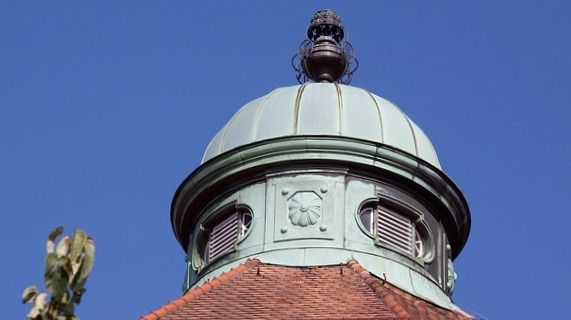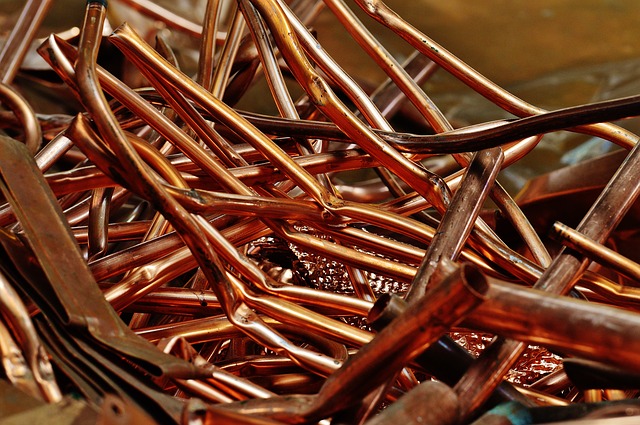Copper in construction

|

|
Copper is a soft, malleable, ductile metal with high thermal and electrical conductivity and good resistance to corrosion due to the protective patina that forms on its surfaces. It has low thermal expansion, making it stable and resistant to deterioration from movement. It is relatively light compared to lead, and requires little maintenance. It is non-magnetic and has good biofouling resistance
Copper has the chemical symbol Cu (from Latin: cuprum) and atomic number 29. It has been used as far back as 8,000 BC because it is a native metal, occurring naturally in a useable form. It is also found in the minerals cuprite, malachite, azurite, chalcopyrite and bornite, and is a by-product of silver production.
It is commonly used in the construction industry to form pipes and tubing for potable water distribution and heating and cooling systems, as it is malleable and joints can be easily formed by soldering. The ease with which it can be made to form complex shapes means it is also used as a cladding and flashing material, for gutters, downpipes and coping. Electrical and communications cables are often formed with copper wire.
It can be hot and cold worked, and joints can be formed by soldering or welding, using mechanical fasteners, by brazing, or with adhesives. It can specified according to the temper levels; soft, half-hard, hard, spring and extra-spring.
Copper is a pinkish-orange colour when first exposed, but can oxidise to a blue green colour. This oxidisation is sometimes allowed intentionally to create a characteristic green cladding. It can also be given a range of brown colours.
It is generally recyclable, and this combined with its long life means it has relatively low life cycle impacts.
Brass is an alloy of copper and zinc.
[edit] Related articles on Designing Buildings
Featured articles and news
Architects, architecture, buildings, and inspiration in film
The close ties between makers and the movies, with our long list of suggested viewing.
SELECT three-point plan for action issued to MSPs
Call for Scottish regulation, green skills and recognition of electrotechnical industry as part of a manifesto for Scottish Parliamentary elections.
UCEM becomes the University of the Built Environment
Major milestone in its 106-year history, follows recent merger with London School of Architecture (LSE).
Professional practical experience for Architects in training
The long process to transform the nature of education and professional practical experience in the Architecture profession following recent reports.
A people-first approach to retrofit
Moving away from the destructive paradigm of fabric-first.
International Electrician Day, 10 June 2025
Celebrating the role of electrical engineers from André-Marie Amperè, today and for the future.
New guide for clients launched at Houses of Parliament
'There has never been a more important time for clients to step up and ...ask the right questions'
The impact of recycled slate tiles
Innovation across the decades.
EPC changes for existing buildings
Changes and their context as the new RdSAP methodology comes into use from 15 June.
Skills England publishes Sector skills needs assessments
Priority areas relating to the built environment highlighted and described in brief.
BSRIA HVAC Market Watch - May 2025 Edition
Heat Pump Market Outlook: Policy, Performance & Refrigerant Trends for 2025–2028.
Committing to EDI in construction with CIOB
Built Environment professional bodies deepen commitment to EDI with two new signatories: CIAT and CICES.
Government Grenfell progress report at a glance
Line by line recomendation overview, with links to more details.
An engaging and lively review of his professional life.
Sustainable heating for listed buildings
A problem that needs to be approached intelligently.
50th Golden anniversary ECA Edmundson apprentice award
Deadline for entries has been extended to Friday 27 June, so don't miss out!
CIAT at the London Festival of Architecture
Designing for Everyone: Breaking Barriers in Inclusive Architecture.
Mixed reactions to apprenticeship and skills reform 2025
A 'welcome shift' for some and a 'backwards step' for others.
























